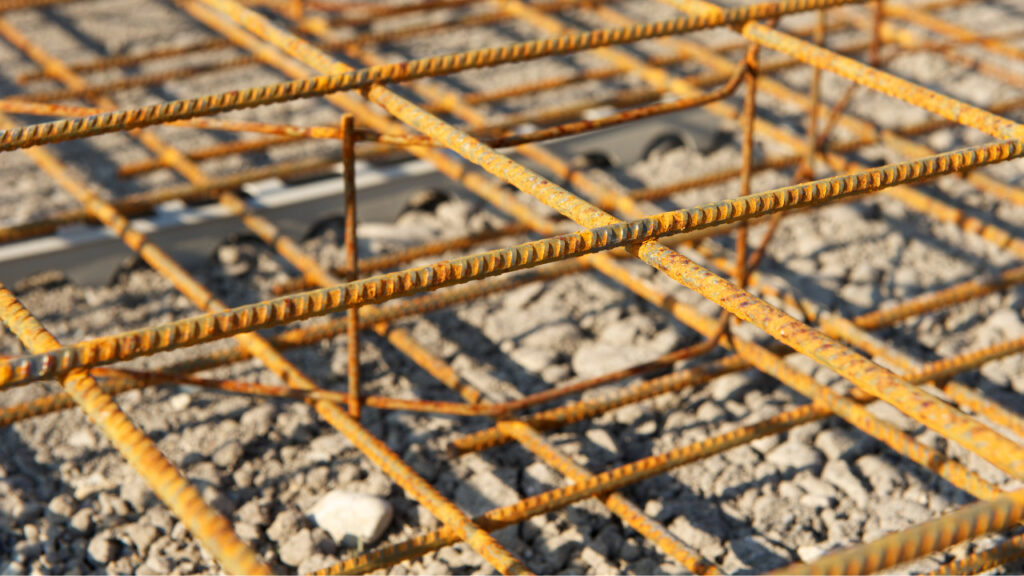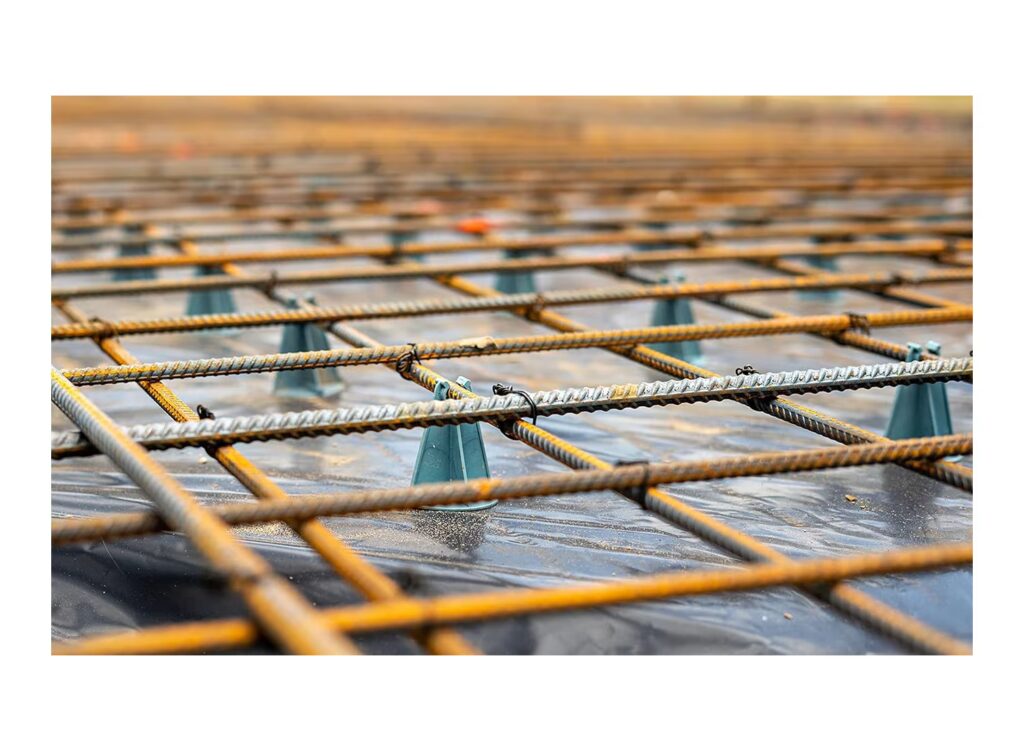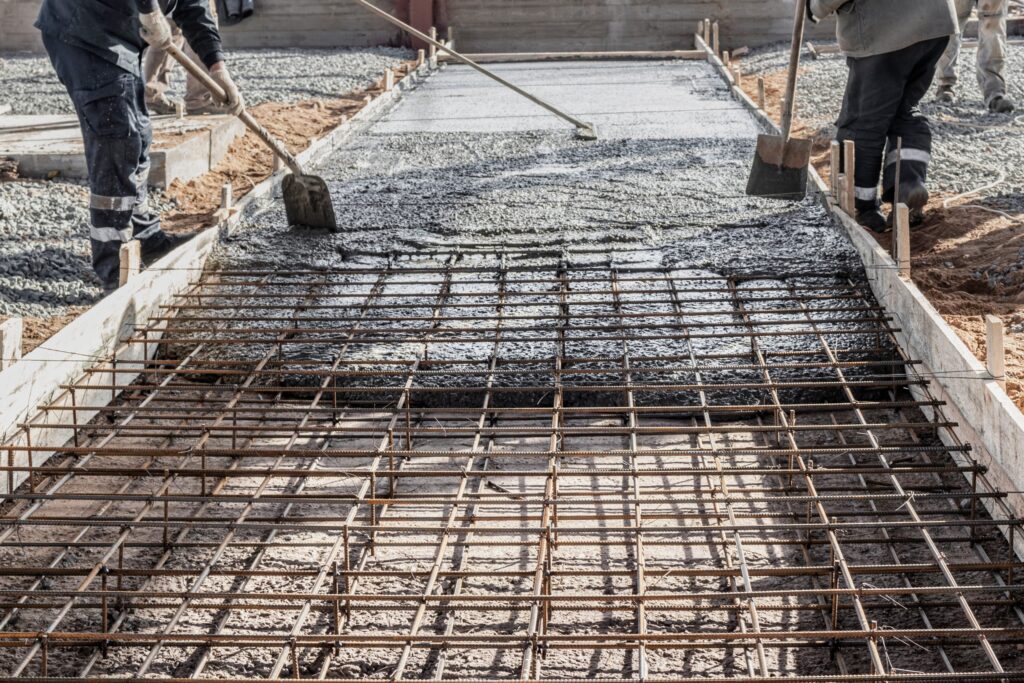
Why Reo bar Remains a Core Component in Reinforced Concrete Work
Reinforcement bars, commonly known as Reo bars, are a vital part of modern construction. They provide the necessary strength and stability to concrete structures. These steel bars turn regular concrete into a strong building material that can bear heavy loads and withstand environmental pressures.
By combining Reo bars with concrete, we create a powerful partnership: concrete is great at handling compression forces, while the steel reinforcement takes care of tensile forces. This combination has changed the way we build, making it possible to construct everything from tall skyscrapers to large bridges.
This guide will cover:
- The important role of Reo bars in making structures strong
- The different types and materials used for reinforcement
- How primary and secondary reinforcement are applied
- The best practices for installing and maintaining reinforcement
- The advantages of using high-quality reinforcement
- The industry standards and regulations that apply
By understanding these topics, construction professionals can make better choices when it comes to selecting and implementing reinforcement. This will help ensure that concrete structures remain durable and safe for many years to come.
The Role of Reo Bars in Enhancing Structural Strength
Reinforcement bars, commonly known as reo bars, are essential components in concrete structures. They play a crucial role in creating a strong and durable material that can withstand various forces.

How Reo Bars Improve Tensile Strength
- Reo bars absorb and distribute tensile forces that would typically cause concrete to crack.
- Strategic positioning allows the bars to resist bending and flexural stresses.
- The steel’s high tensile capacity compensates for concrete’s natural weakness in tension.
How Reo Bars Optimise Compressive Strength
- Concrete naturally excels in compression.
- Reo bars prevent lateral deformation under heavy loads.
- The combination creates a stronger resistance to crushing forces.
The combination of reo bars and concrete forms a well-balanced structural system. This balance is especially important in:
- Multi-storey buildings facing variable load distributions
- Bridge structures experiencing dynamic forces
- Foundation systems managing soil pressure
- Retaining walls resisting lateral earth forces
The diameter and spacing of reo bars directly influence the structure’s load-bearing capacity. Engineers calculate these specifications based on:
Learn more on: Comparing LVL Formwork Timber vs Traditional Framing Materials
- Expected load conditions
- Structural element dimensions
- Environmental factors
- Building code requirements such as IS 456:2000 which provides guidelines for the design and construction of reinforced concrete structures.
Proper bonding between concrete and reo bars is vital for their interaction. The strength of this bond depends on:
- Surface texture of the bars
- Concrete mix design, which should adhere to certain standards as outlined in various concrete design codes
- Adequate concrete cover
- Proper compaction during placement
To achieve optimal structural performance, precise engineering calculations are necessary. These calculations determine the exact amount and positioning of reinforcement required for each specific application. For further understanding into these calculations, resources such as this sample chapter can provide valuable insights.
Exploring Different Types and Materials of Reo Bars
The construction industry uses various materials for reinforcement bars, each with its own advantages for specific applications:

1. Carbon Steel Reo Bars
- High tensile strength suitable for standard construction
- Cost-effective option for most building projects
- Available in various grades (250, 400, 500 MPa)
- Requires protective coating in corrosive environments
2. Stainless Steel Reo Bars
- Superior corrosion resistance
- Ideal for coastal structures and marine environments
- Extended service life in aggressive conditions
- Higher initial cost offset by reduced maintenance
3. Glass Fibre Reinforced Polymer (GFRP) Bars
- Non-magnetic properties
- Lightweight design
- Excellent for medical facilities and laboratories
- Resistant to chemical deterioration
4. Carbon Fibre Reinforced Polymer (CFRP) Bars
- Ultra-high strength-to-weight ratio
- Non-corrosive properties
- Perfect for seismic-resistant structures
- Suitable for bridge rehabilitation projects
The selection of reo bar material depends on:
- Project requirements
- Environmental conditions
- Budget constraints
- Expected service life
- Structural loads
Each material type has its own characteristics that affect installation methods and long-term performance. Carbon steel is still the most widely used option because it offers a good balance of performance and cost-effectiveness. However, specialised applications may require the use of advanced materials like GFRP or CFRP, especially in harsh environments or structures that need specific properties.
The construction market is constantly evolving, with new and innovative reinforcement materials being developed. These materials push the limits of what structural engineering can achieve and provide builders and engineers with more options to work with.
Understanding Primary and Secondary Reinforcement in Concrete Structures
Reinforced concrete structures rely on two distinct types of reinforcement: primary and secondary. Each type serves specific functions critical to structural integrity and longevity.
Primary Reinforcement
- Carries the main structural loads
- Absorbs tensile forces in beams and columns
- Runs parallel to the direction of principal stress
- Determines the ultimate strength of concrete elements
Secondary Reinforcement
- Controls crack formation and distribution
- Prevents temperature-related deformation
- Distributes loads across larger areas
- Provides resistance against shear forces
The placement of these reinforcements follows precise engineering calculations:
Primary reinforcement typically comprises larger diameter bars positioned at critical stress points, while secondary reinforcement uses smaller diameter bars in a distributed pattern.
In beam construction, primary reinforcement bars occupy the tension zone at the bottom, with secondary reinforcement positioned as stirrups to resist shear forces. For columns, vertical bars act as primary reinforcement, complemented by horizontal ties as secondary support.
Slab designs incorporate both types strategically:
- Main bars span the shorter direction
- Distribution bars run perpendicular
- Additional bars near corners prevent diagonal cracking
- Temperature steel helps manage thermal stresses
This dual reinforcement system creates a robust structural network, enabling concrete structures to withstand complex loading patterns and environmental stresses throughout their service life.
Best Practices for Installing and Maintaining Reo Bars to Ensure Long-Term Performance
Proper installation and maintenance of reo bars play a crucial role in achieving optimal structural performance and longevity. The following guidelines ensure maximum effectiveness and durability:
Essential Installation Practices:
- Maintain precise concrete cover specifications
- Secure bars firmly with appropriate tie wire
- Use proper spacing between parallel bars
- Clean bars thoroughly before installation
- Position bars accurately according to design specifications
Concrete Cover Requirements:
The concrete cover serves as a protective barrier against environmental factors and must meet minimum depth requirements based on exposure conditions:
- Mild environments: 20-25mm
- Moderate exposure: 30-40mm
- Severe exposure: 45-50mm
Corrosion Prevention Strategies:
- Apply protective coatings to reo bars in aggressive environments
- Implement waterproof membranes where necessary
- Use galvanised or epoxy-coated bars for coastal projects
- Monitor concrete pH levels during curing
- Address surface cracks promptly to prevent water infiltration
Quality Control Measures:
To maintain the quality of the installation, regular inspection of reo bar placement is essential. This includes verification of bar diameter and grade, documentation of spacing and cover measurements, assessment of concrete mix compatibility, and monitoring of curing conditions. For more detailed insights into quality control measures in construction, refer to this comprehensive guide.
Maintenance Requirements:
Regular maintenance is key to ensuring the longevity of structures. This involves periodic structural inspections, immediate repair of exposed reinforcement, regular cleaning of drainage systems, documentation of maintenance activities, and assessment of environmental exposure conditions.
These practices ensure the structural integrity of reinforced concrete elements while maximizing their service life. The combination of proper installation techniques and ongoing maintenance creates a robust defense against deterioration and structural failure. Furthermore, implementing best practices for pavements can further enhance the performance and durability of these structures.
Advantages of Using High-Quality Reo Bars in Construction Projects
High-quality reinforcement bars deliver substantial benefits to construction projects through enhanced structural performance and durability. These premium materials demonstrate superior characteristics in:
Structural Performance
- Higher yield strength for improved load-bearing capacity
- Enhanced fatigue resistance under cyclic loading
- Reliable ductility for seismic resistance
- Precise dimensional tolerances for optimal concrete bonding
Environmental Resilience
- Superior corrosion resistance in aggressive environments
- Reduced susceptibility to chemical attack
- Better performance in extreme temperature variations
- Enhanced durability in coastal and marine applications
Cost-Effectiveness
- Extended service life of structures
- Reduced maintenance requirements
- Lower risk of structural repairs
- Minimized replacement needs
Quality reo bars maintain their structural integrity under demanding conditions, from heavy traffic loads to severe weather exposure. Their consistent material properties ensure predictable performance throughout the structure’s lifespan. The enhanced tensile strength allows for optimal distribution of structural forces, particularly in areas subject to high stress concentrations.
These high-grade materials also exhibit superior bonding characteristics with concrete, creating a more effective composite action. This improved bond strength results in better crack control and enhanced structural stability under various loading conditions.
The implementation of quality reo bars significantly reduces the risk of premature structural deterioration, particularly in challenging environments such as coastal regions or areas with aggressive soil conditions.
Industry Standards Supporting the Use of Reo Bars in Construction Work
Australian construction practices adhere to strict regulations and standards governing the use of reinforcement bars in concrete structures. These standards ensure safety, durability, and structural integrity across all construction projects.
Key Australian Standards for Reo Bars:
- AS/NZS 4671: Steel Reinforcing Materials
- AS 3600: Concrete Structures
- AS 5100: Bridge Design
These standards specify essential requirements:
- Material Properties
- Minimum yield strength
- Ultimate tensile strength
- Elongation requirements
- Chemical composition limits
- Design Requirements
- Minimum concrete cover
- Bar spacing specifications
- Splice length calculations
- Development length requirements
The Building Code of Australia mandates compliance with these standards, making reo bars an indispensable element in construction. International guidelines, such as the American Concrete Institute (ACI) standards and Eurocode 2, also reinforce the critical role of reo bars in concrete structures.
A comprehensive understanding of these industry standards can be found in detailed studies like this one, which delve into various aspects of construction engineering.
Quality Assurance Requirements:
- Regular material testing
- Certified manufacturing processes
- Documentation of compliance
- Independent verification systems
These comprehensive standards reflect the construction industry’s commitment to maintaining high-quality reinforced concrete structures, ensuring reo bars remain a fundamental component in modern construction methods.
Conclusion
Reo bars are an essential part of modern construction. They provide crucial support by improving the tensile strength of concrete. With their proven effectiveness, affordability, and versatility, reo bars have become the foundation of reinforced concrete structures around the world.
Even though new technologies and materials are emerging in the construction industry, reo bars continue to be a fundamental building component because of their:
- Reliable Performance: Time-tested strength and durability
- Cost-Effectiveness: Optimal balance of quality and value
- Versatility: Adaptability to diverse construction requirements
- Industry Trust: Widespread acceptance and standardisation
For construction professionals who want to create long-lasting structures, it is important to choose high-quality reo bars from trusted suppliers. Using top-notch reinforcement materials will directly impact the lifespan and stability of your projects. Reach out to qualified suppliers today to discuss your specific reinforcement needs and ensure that your upcoming construction project benefits from the use of properly specified, high-grade reo bars
